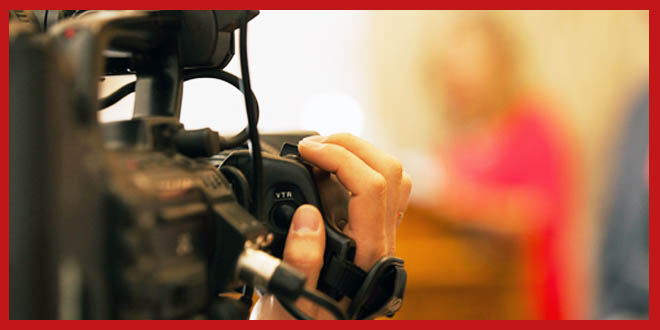Today, with the tools available, anyone can make a high-quality video. Even the most basic phones shoot full 1080p video and many shoot UHD 4K. iPhones can be used to create TV-quality commercials and even independent films. Somewhat less common, though, are camera phones that have higher frame rates that let you make cool slow-motion videos.
With slow motion, you can capture your friend nailing a skateboard trick or add a dramatic moment to a narrative piece with a slow-motion explosion.
The possibilities are endless.
Are you inspired to start filming? Master the art of slow motion video with these tips:
Capturing Slow Motion Video
There are two ways to capture slow-motion video. The first is within the camera at the time of shooting, and the second is during post production. If you want the shot to be in slow motion from the beginning, however, it is best to do it in camera. This leads to the easiest post production workflow and tends to give better quality in the long term.

One of the biggest mistakes new filmmakers make when shooting slow motion is underestimating the amount of light they need. If you are shooting your main project at 30 frames per second (FPS), then your shutter speed should be a 180 degree shutter or 1/60 of a second. This gives the correct amount of motion blur that is similar to a movie or television show. Therefore, for a shot that is half speed, you need to shoot at 60 FPS with 1/120 shutter. This means your camera gets half the amount of light it was before.
Your shutter speed capabilities don't have to be a deal breaker, though. If you don't own many lights and your video is blurry, the easiest way to fix the problem is to go outdoors. In direct sunlight, you almost never run into a situation where the scene is too dark, even for the most high-speed cameras.
Another point to remember when shooting slow motion is that you can't capture any dialogue where your subject's mouth is seen moving. The movement of his or her mouth will not line up with your sound. You can overcome this problem by removing any dialog or adding a voice-over in post production.
Editing in Post Production
On most consumer cameras, the highest frame rates are most commonly 60 FPS. Some professional-level cameras and dedicated action cameras can go up to 120 FPS, however.
But what happens if you need to slow things down even more?

To slow down your footage beyond what your camera can do, you need to go into an editing program.
Then, you have a few options, some of which are better than others. The obvious course of action is to just slow down the speed of your footage. However, this is not recommended. Slowing it down this way lengthens the time the frames are on the screen, which leads to a jerky effect. This method makes your video look like a flip book that isn't being flipped quickly enough. If you think of the frames as numbers, slowing the clip speed looks like this:
- Original: 1, 2, 3, 4
- Slowed clip speed: 1, 1, 2, 2, 3, 3, 4, 4
Another option is frame blending. This lets the program slow down the footage; however, it creates an additional frame that is a blend of the two between it. Although this is better than slowing the clip speed, it still is not ideal because you get motion artifacts that don't look natural. Here's what it looks like in number form:
- Original: 1, 2, 3, 4
- Frame blending: 1, 1.5, 2, 2.5, 3, 3.5, 4, 4.5
Time warp is your best option for creating slow-motion videos in post. Time warp works by layering a second version of the clip over the first and then analyzing it to more accurately create frames. Essentially, it figures out what is moving in the frame and what isn't. After it does this, it works similarly to frame blending; however, it creates frames to a much finer degree. Time warp looks like this in number form:
- Original: 1, 2, 3, 4
- Time warp: 1, 1.25, 1.5, 1.75, 2, 2.25 and so on
Get Started with Slow Motion

With the capability of your mobile phone or modern DSLR video camera, you can get started in creation of your own slow motion video. If you have any suggestions for how one can use slow motion video in their projects, post in the comments below:





